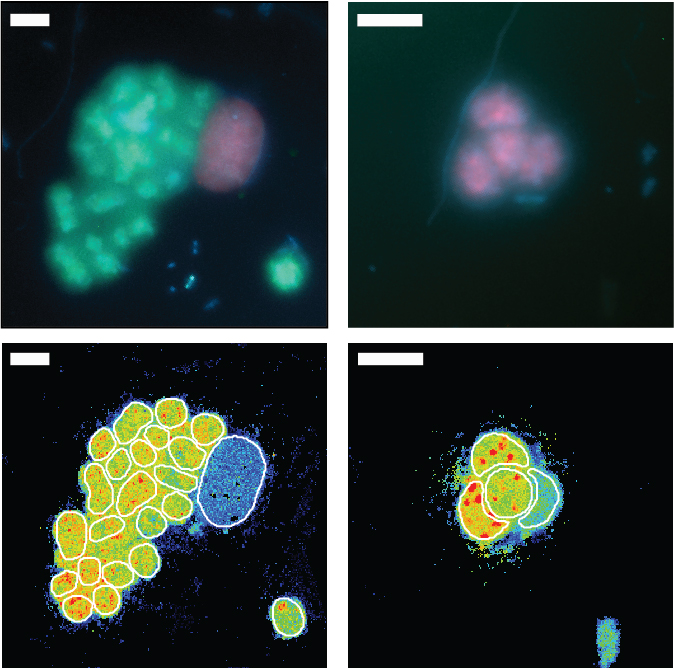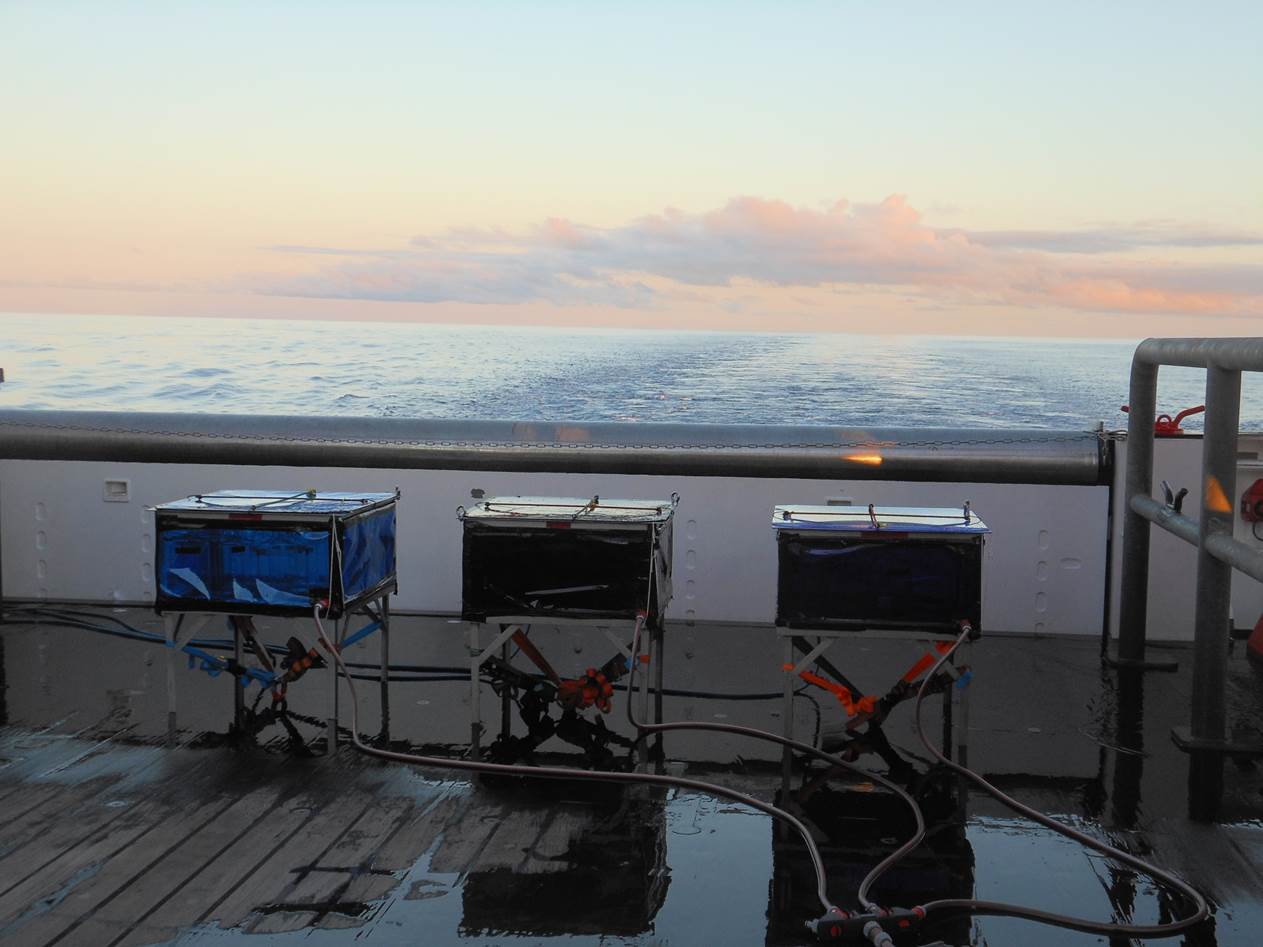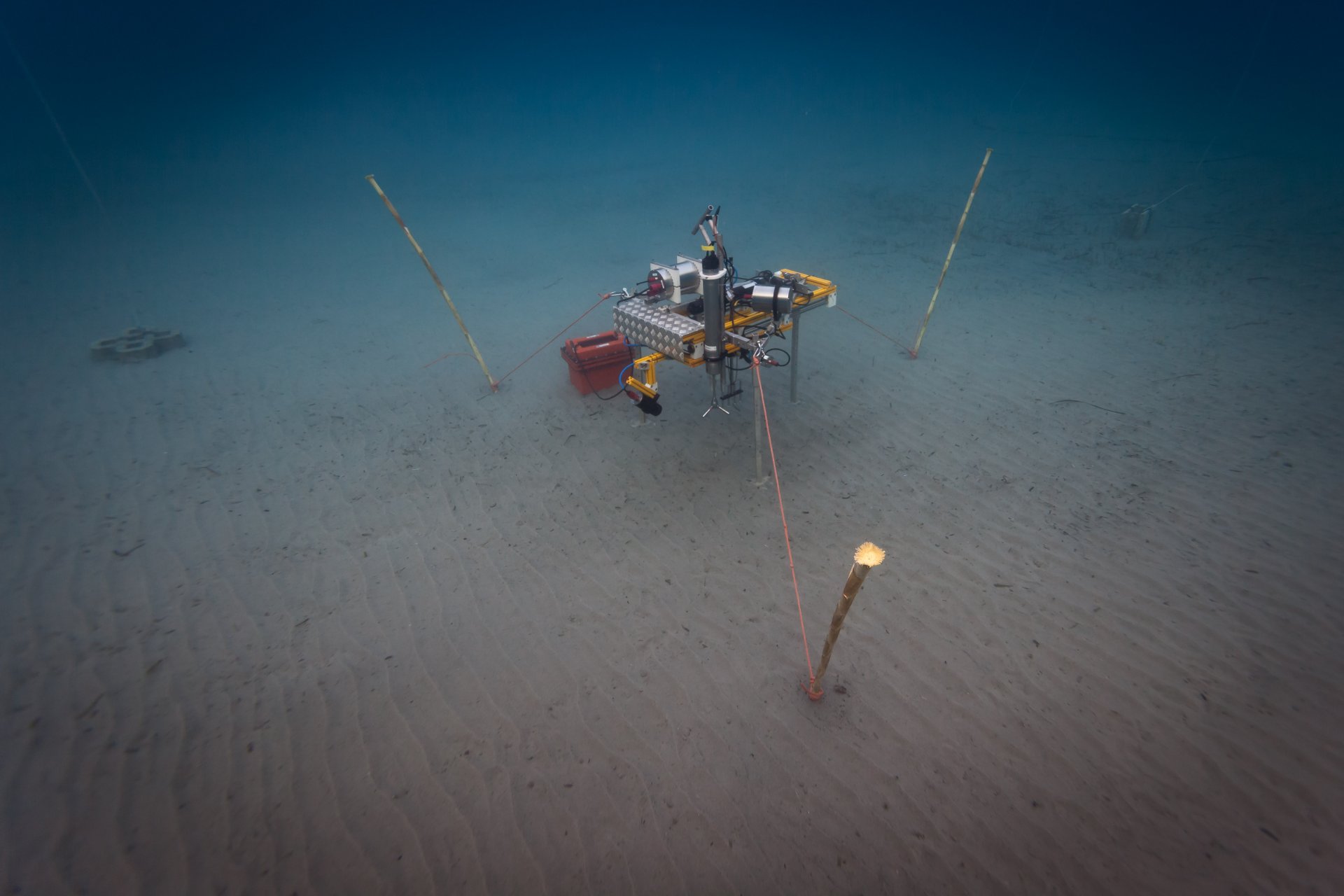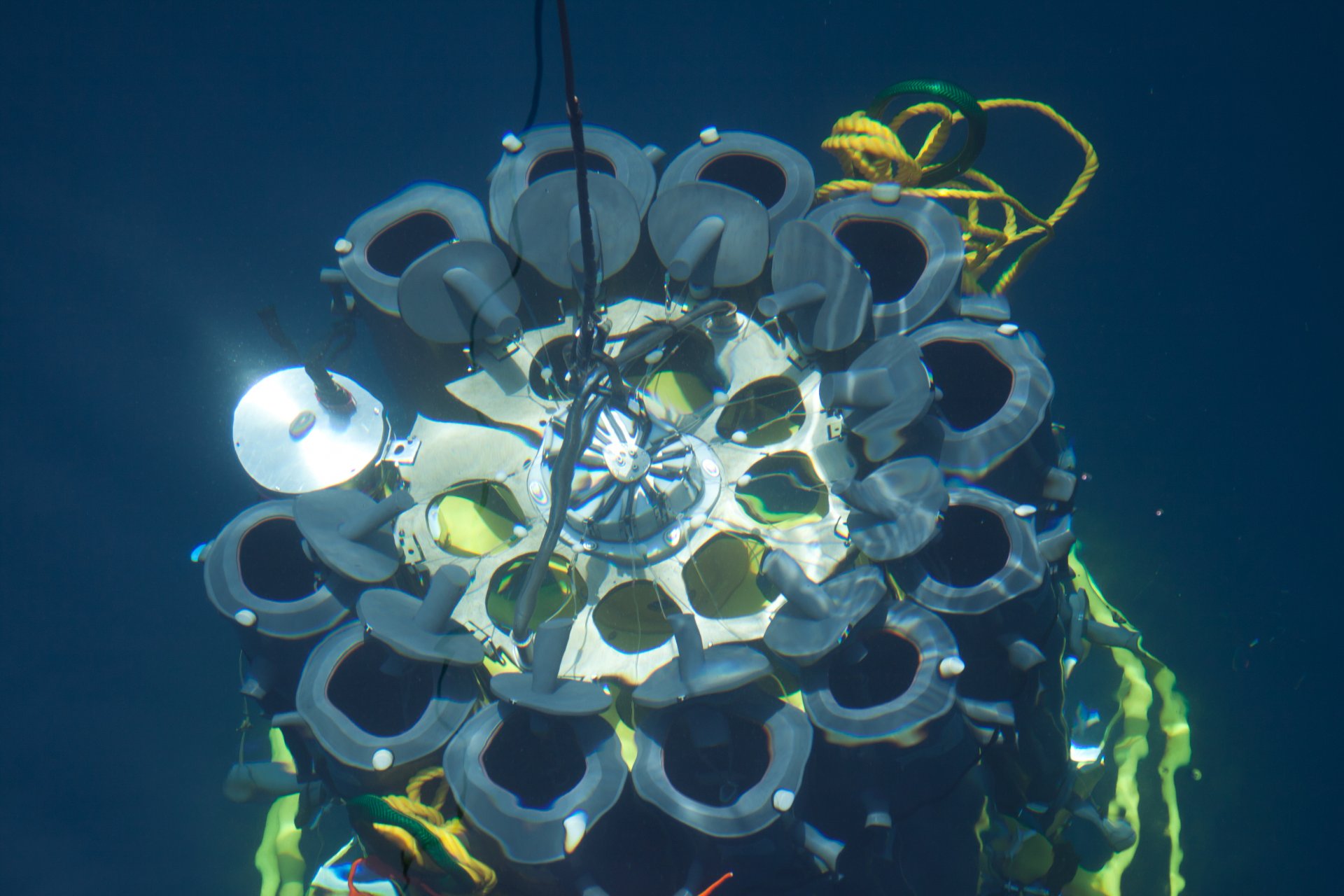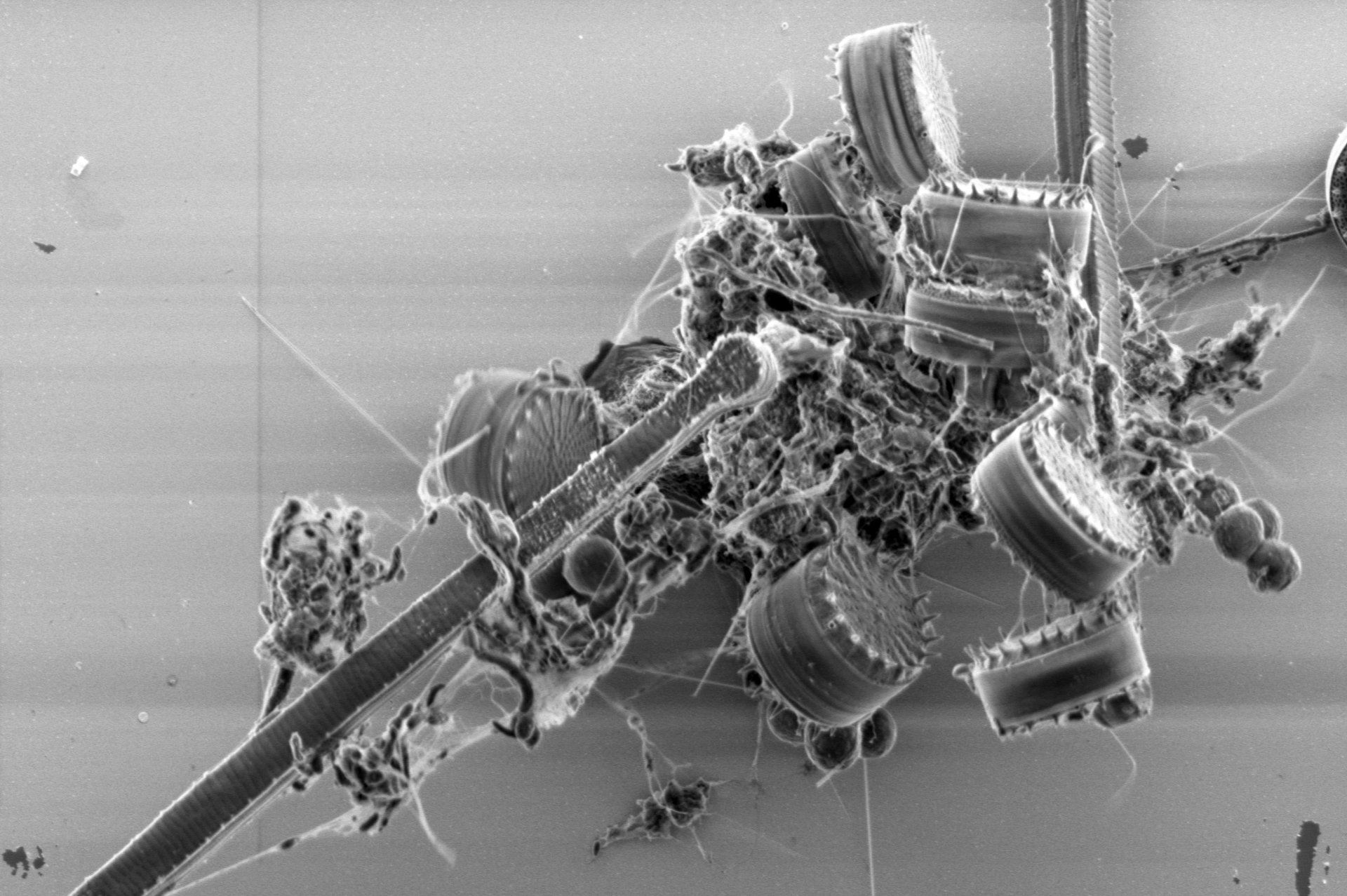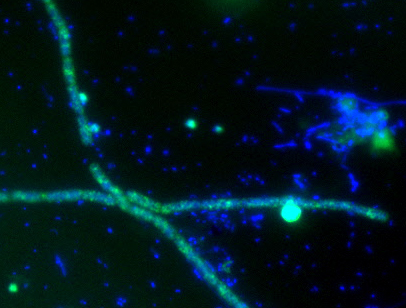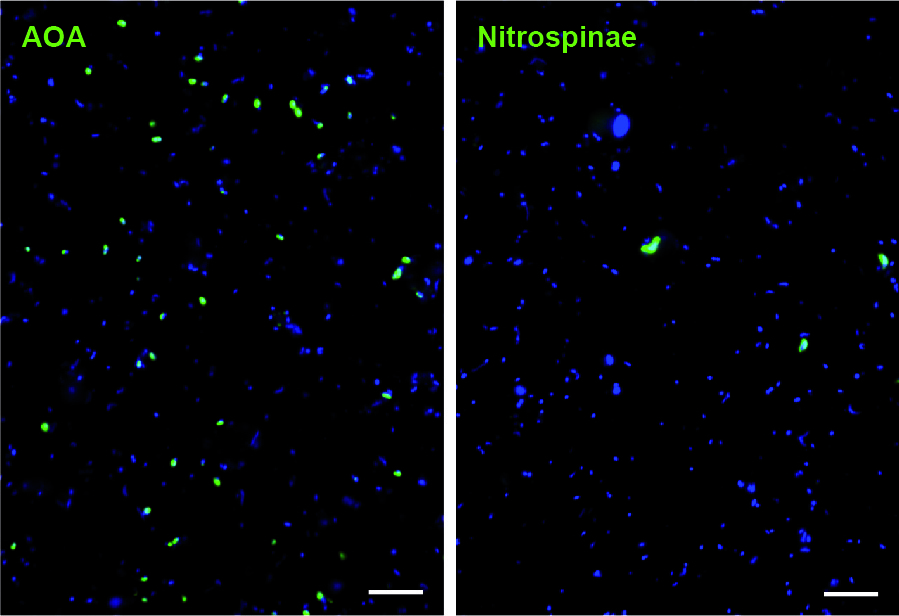- Departments
- Department of Biogeochemistry
- Research Projects
Research Projects
Research in the Biogeochemistry Department focuses on microbiological and geochemical processes that control bioactive element cycling in the marine environment. We employ geochemical, microbiological, modeling, molecular and single-cell techniques to study the environmental regulation of these processes, and their effects on the global biogeochemical cycles.
Our goal is to provide fundamental insights into microbially-mediated processes in the Ocean that ultimately affect ocean chemistry, biology and climate, and will provide vital input for models used to predict potential future changes resulting from human activities.
Single-cell environmental microbiology
The vast majority of environmental bacteria remain uncultured. Our knowledge of their physiology and metabolic capacities therefore strongly depends on methods capable of analyzing single cells. Reliable identification of target populations in environmental samples remains a key prerequisite for analyses by modern microscopic and spectrometric techniques. We develop labeling and imaging methods that would allow for correlative imaging using light-, ion-, laser- and electron microscopy in order to gain new insights into the contributions of microorganisms to the biogeochemical element cycling.
| PIs: Sten Littmann |
N2 fixation
Microbial fixation of N2 gas into biologically available ammonium is the main source of nitrogen in the open Ocean. N2 fixation is only catalyzed by a small but diverse group of prokaryotic microorganisms. In the open ocean, the majority of N2 fixation is attributed to larger colonial and heterocystous cyanobacteria populations. However, there are also other, unicellular, N-fixing microorganisms and it is thought that the activity of these other N2 fixing populations may help balance the N budget; however we know little about their distribution and activity.
| PIs: Dr. Wiebke Mohr |
Sandy sediments
Permeable sediments dominate the seafloor of continental shelves and yet they are amongst the most understudied habitats within our oceans. Permeable sediments act as a biocatalyst for organic matter mineralization and nitrogen turnover, both of which are driven by advective porewater flow. With the help of a new benthic lander and flow-through reactors we measure oxygen uptake and nitrogen loss in both intertidal and subtidal sediments of the Wadden Sea and German Bight.
| PIs: Dr. Hannah Marchant |
Nitrogen loss from oxygen minimum zones
Oxygen minimum zones (OMZ) are expanding globally, and at present account for up to 40 % of oceanic nitrogen loss. For decades, oceanic nitrogen loss has been attributed entirely to heterotrophic denitrification. By using a combination of molecular techniques and incubation experiments we have shown that, instead, anaerobic ammonium oxidation (anammox) is the main nitrogen loss process in the Namibian, Peruvian and Arabian Sea OMZ. However, suboxic conditions of the OMZ allow for both anaerobic and aerobic processes to co-occur and despite their obvious importance, the magnitude and interactions of these processes in OMZ are not well understood.
| PIs: Dr. Gaute Lavik |
Marine snow and sinking particles
Aggregate sedimentation and remineralization control the vertical flux of organic matter, and directly affect elemental cycling and food-web structures. These processes constitute an important variable in the Ocean’s response to climate change. Sinking marine aggregates are the main vehicles removing organic carbon from the sea surface to the deep sea and are hot-spots of microbially-mediated bioactive element cycling. Remineralization of sinking POM also leads to the formation of oceanic oxygen minimum zones (OMZ).
| PIs: Dr. Soeren Ahmerkamp |
Methane oxidation
Despite covering most of the Earth’s surface, methane emissions from the oceans are comparably small. On the contrary, terrestrial aquatic reservoirs are major sources of methane, with freshwater lakes contributing up to 16%. Methanotrophic microorganisms play a key role in reducing methane fluxes in oxic as well as in anoxic aquatic systems. Both bacteria and archaea posses the capacity to oxidize methane. It is recognized that in marine environments anaerobic methane oxidation processes act as a very efficient methane filter. On the contrary, the full variety of processes responsible for methane removal in lacustrine environments is not understood, nor are the key microbial players known.
| PIs: Dr. Jana Milucka |
Ammonia and nitrite oxidation
Nitrification, the oxidation of ammonia to nitrate via nitrite, is a key process in global nitrogen (N) cycling, and, as a result of balanced ammonia and nitrite oxidation, nitrate is the main bioavailable inorganic N-compound in the ocean. Ammonia oxidation is catalyzed by ammonia oxidizing archaea (AOA), which are among the most abundant organisms on Earth, even though they depend on the limiting nutrient ammonium. We investigate how metabolic versatility and the use of organic N sources contribute to the ecological success of AOA. The counterpart of AOA, nitrite oxidizing bacteria of the phylum Nitrospinae are, in contrast, rare. We study how differences in energy yield, growth and mortality rates between AOA and Nitrospinae shape their abundances in the ocean.
